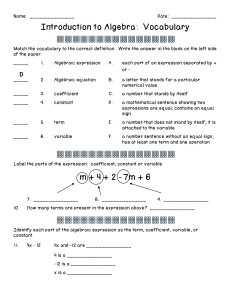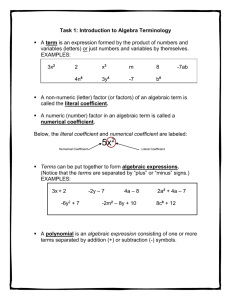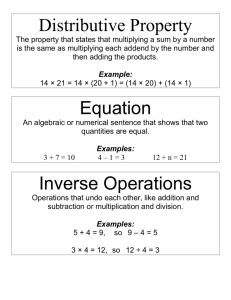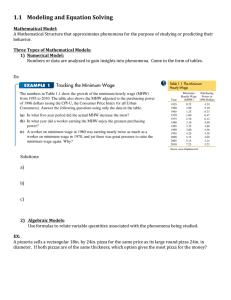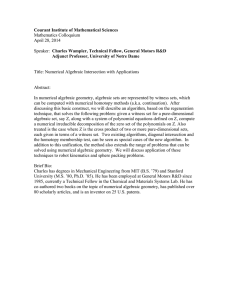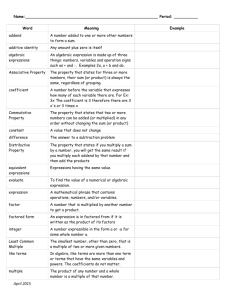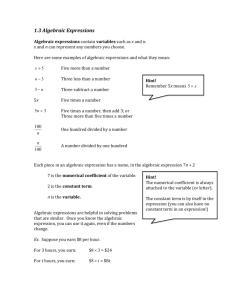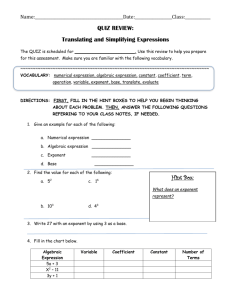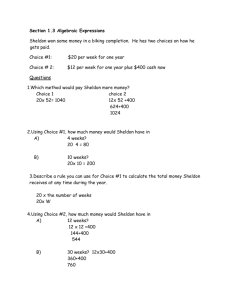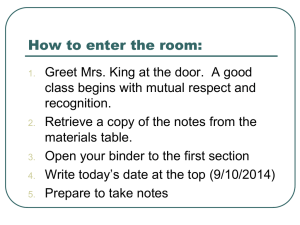Introduction to Patterns
advertisement
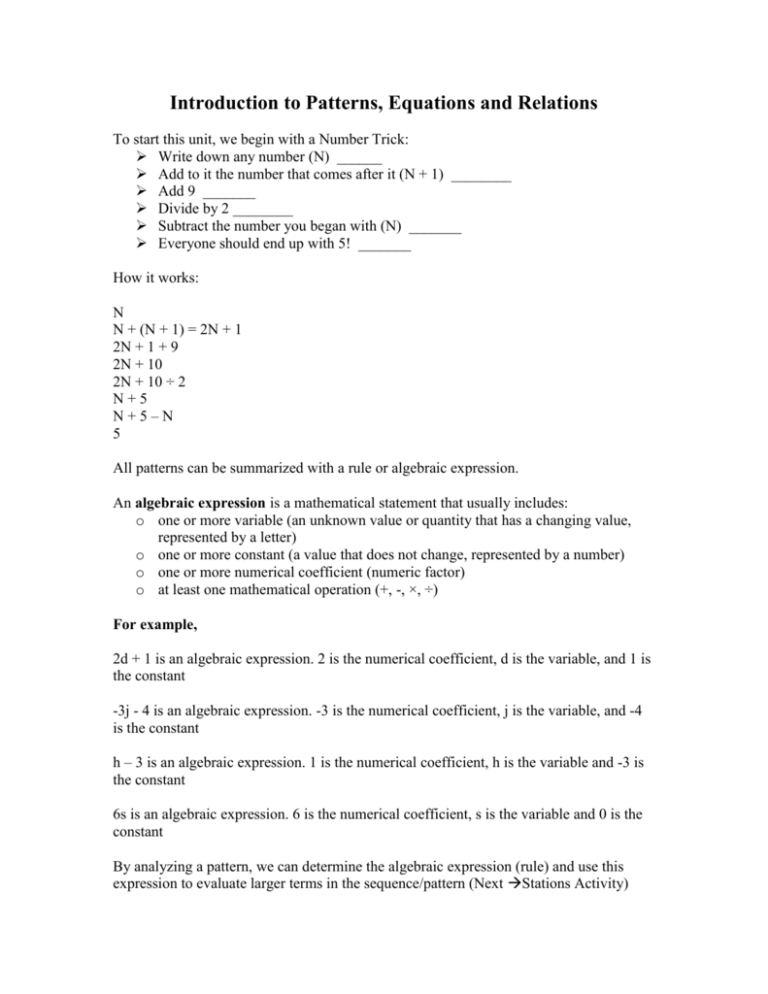
Introduction to Patterns, Equations and Relations To start this unit, we begin with a Number Trick: Write down any number (N) ______ Add to it the number that comes after it (N + 1) ________ Add 9 _______ Divide by 2 ________ Subtract the number you began with (N) _______ Everyone should end up with 5! _______ How it works: N N + (N + 1) = 2N + 1 2N + 1 + 9 2N + 10 2N + 10 ÷ 2 N+5 N+5–N 5 All patterns can be summarized with a rule or algebraic expression. An algebraic expression is a mathematical statement that usually includes: o one or more variable (an unknown value or quantity that has a changing value, represented by a letter) o one or more constant (a value that does not change, represented by a number) o one or more numerical coefficient (numeric factor) o at least one mathematical operation (+, -, ×, ÷) For example, 2d + 1 is an algebraic expression. 2 is the numerical coefficient, d is the variable, and 1 is the constant -3j - 4 is an algebraic expression. -3 is the numerical coefficient, j is the variable, and -4 is the constant h – 3 is an algebraic expression. 1 is the numerical coefficient, h is the variable and -3 is the constant 6s is an algebraic expression. 6 is the numerical coefficient, s is the variable and 0 is the constant By analyzing a pattern, we can determine the algebraic expression (rule) and use this expression to evaluate larger terms in the sequence/pattern (Next Stations Activity)
